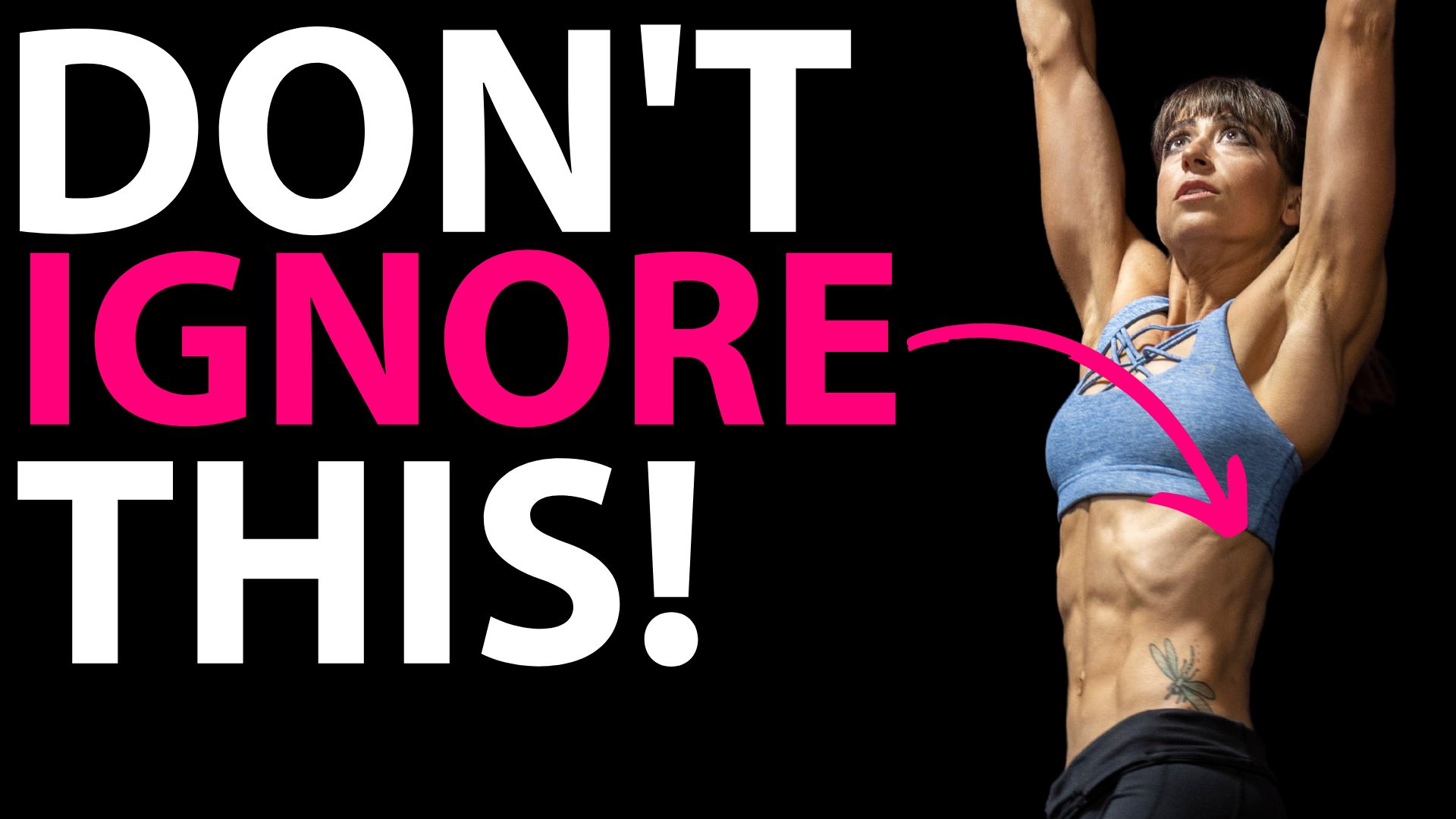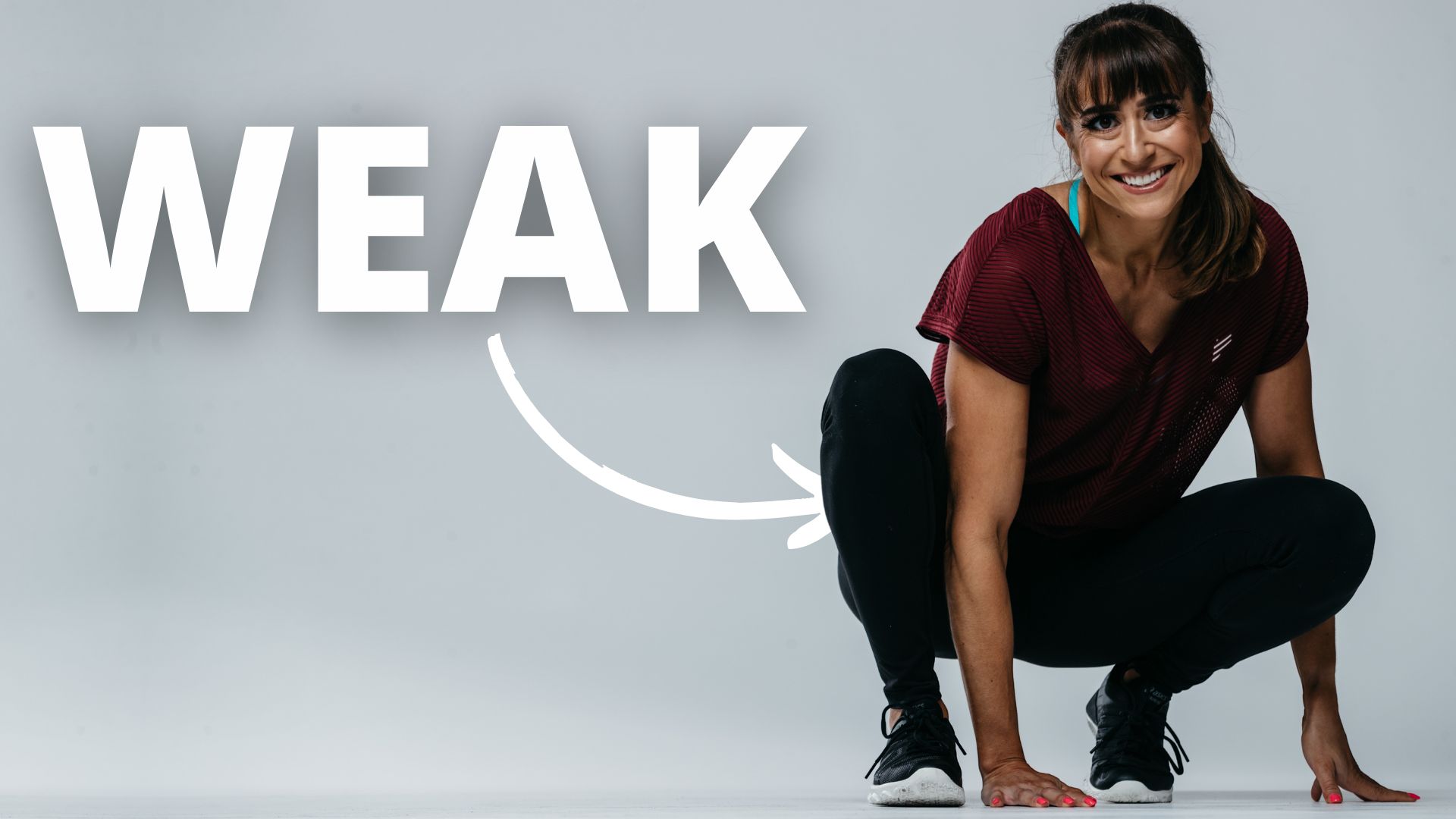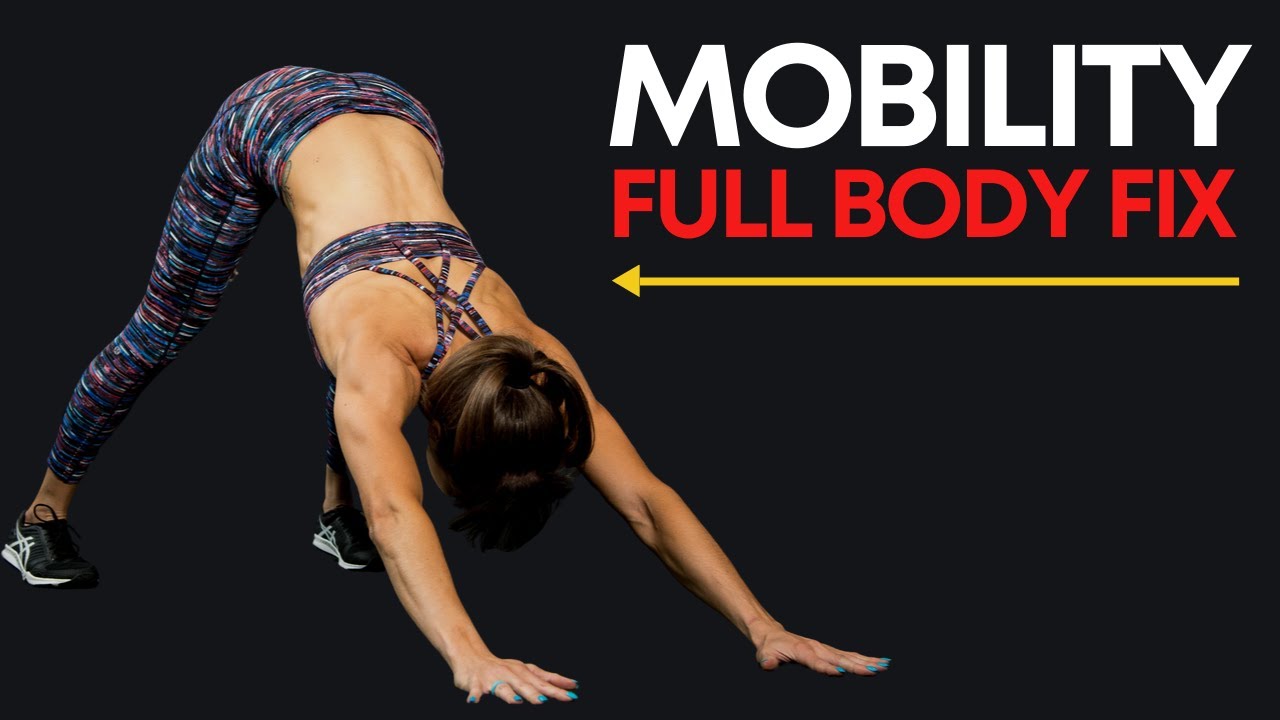
The Weakest Muscle in Your Upper Body (Your SERRATUS ANTERIOR)
When we create upper body workouts, we map in exercises for our chest, shoulders, back, biceps, triceps…
But we too often don’t include moves for this essential muscle…
The Serratus Anterior.
And while no, this muscle isn’t going to be one we target with super heavy lifts during our sessions, it is a key muscle we strengthen and activate if we want to be able to press or pull more without shoulder injury and see the muscle gains we want from our training.
Honestly this muscle needs far more love than it gets, especially if we have had previous shoulder, neck or even upper back aches and pains.
That’s why I want to break down the important role this muscle plays in our shoulder and scapular health as well as how to make sure your serratus anterior is working so we can see better strength and muscle gains.
Then I’ll go over 3 key moves to activate and strengthen your serratus anterior as well as a few bonus prehab tips to help you get more out of your upper body training in general!
First, why is the Serratus Anterior so important?

The serratus anterior is often called the boxer’s muscle as it is key to a powerful punch and its main function is protraction of the shoulder blades or that movement of the shoulder blades forward around your rib cage.
Not only does this muscle control the movement of our shoulder blade to protract as we press horizontally like in a bench press or punch, but also to upwardly rotate as we press overhead.
This upward rotation of the shoulder blade allows us to use our back correctly to support our shoulders and power the press overhead. Limited movement can lead to us really struggling to press vertically up.
Our shoulder blades can also limit our ability to press overhead and lead to neck, shoulder and upper back aches and pains by being anteriorly tipped.
This is when our shoulder blades don’t sit correctly on our rib cage and the bottom slightly sticks out as the top of the shoulder blade is tilted forward.
This is another function of the serratus anterior – to stabilize the shoulder blade so it does sit correctly and can even posteriorly tilt slightly as we press overhead.
This proper positioning of our shoulder blades due to our serratus anterior being strong is essential for us to be able to lift more and avoid upper back, neck and shoulder injuries, even rotator cuff issues.
And too often, we ignore this muscle and even BLAME our rotator cuff for our shoulder pain instead.
This can lead to us doing a ton of work for our rotator cuff which only makes issues worse through further working an overworked or even restricted muscle because it isn’t allowed to work correctly due to limited scapular movement!
And on top of the role it plays in our shoulder blade movement, the serratus anterior also impacts our breathing mechanics and can enhance our physique when developed creating that nice definition around our rib cage!
Next I want to dive into really locating this muscle to feel it working and even address some common issues we can encounter when trying to strengthen it.
It isn’t uncommon with many basic serratus anterior exercises to feel our upper traps, levator scapulae and even pec minor start to want to work when our serratus anterior is weak.
So where is the Serratus Anterior to be exact and how can I tell when other muscles are taking over?
The serratus anterior is the muscle on the sides of your ribs just under your armpit.
Place your opposite hand on your ribs under your armpit then reach the hand on the same side out as if punching or pressing. Feel that muscle engage.
This is what you want to feel working in the 3 Serratus Anterior Activation Exercises I’ll go over next.
All too often though when this muscle is weak, we start to feel the area at the base of our neck, top of our shoulder blade toward our spine or even our chest into the front of our shoulder working instead.
These areas are us feeling our upper traps, levator scapulae, pec minor and even anterior delt starting to work more to compensate for our serratus anterior being weak.
Our upper traps and levator scapula elevate our shoulder blade or lift it up.
We see this happen with a shrugging motion.
And often we tend to shrug extra when pressing to try to lift heavier and compensate for other areas of weakness.
We can also see our chest, specifically our pec minor muscle, and the front of our shoulder feel like they are working extra to stabilize our shoulder when our shoulder blade isn’t sitting properly on our rib cage.
The pec minor works to protract our shoulder blades so will work extra if the serratus anterior isn’t pulling its weight.
The pec minor also will anteriorly tip the shoulder blades when the serratus anterior isn’t strong enough to fight against it and keep alignment. This is why we can see those neck, shoulder and upper back aches and pains popping up.
This is also why we’re often told to do extra rowing or pulling exercises to balance out our posture and strong chest muscles.
And while strengthening our back can be key, especially if we spend a ton of time seated, hunched over our devices, the extra back work may not be paying off if we keep ignoring our serratus anterior!
That’s why I wanted to share 3 activation moves to help!
3 Serratus Anterior Exercises:
The first is a move great for almost every fitness level, the Roller Serratus Anterior Shoulder Extensions.
This move can be done as a unilateral, or one sided exercise, or with both sides at the same time.
To do this move, I love using a roller against a wall, but you can also use sliders or a towel, especially for the one-sided variation.
Place the roller right below your wrists with your palms facing in. You want to be slightly angled in toward the wall to apply more pressure.
Really push into the roller to even feel your serratus anterior slightly engage from a little movement of your shoulder blades away from your spine.
Then roll up on the wall, reaching overhead. Feel your the bottom of your shoulder blades open out to the sides of your back as you feel around your rib cage work to reach up. Don’t just shrug your shoulders.
While you don’t want to force your shoulders down to limit the movement of your shoulder blades, you want to make sure your shoulders aren’t just moving and you aren’t just shrugging.
The roll up is coming from your shoulder blades moving first.
Really push hard into the wall as you extend up, then pull the roller back down to about shoulder height and repeat.
If you have shoulder pain or limited mobility on one side, performing a single arm variation is best.
Note if you start to feel that base of your neck area or even your chest and front of shoulder working too much to walk in a bit closer to the wall or not extend up as high to start.
Another option to work on this overhead serratus strengthening is a Downward Dog Scapular Press. This can help you focus on that push of the ground away to engage if that cue, pushing away helps or you don’t have something you can use to slide on a wall.
The next activation exercise is the Serratus Anterior Press.
This is a horizontal pressing option which focuses on protraction more while the Shoulder Extensions focus a lot on upward rotation of the shoulder blade as well.
The one thing to really be careful with during this press, is that your pecs or the front of your shoulders don’t take over.
It’s one reason I don’t use the push up plus often for activation for the serratus anterior but will include it in workouts for pure strength building.
But this move is a great way to isolate each side independently and even correct imbalances.
A band or cable work well for this move and you’ll want to standing in a staggered stance.
You’re going to be performing a variation of a chest press or punch with the hand of the leg that is staggered back.
As you press out, feel your shoulder blade move forward around your rib cage and focus on those muscles around your ribs really pulling it forward.
You want to even get that little extra reach out at the end, slightly rotating even.
Then bring your hand back into your chest. Be conscious that even though you may slightly press up as you press out that you don’t shrug at the end.
If you don’t have a band or cable, wall protractions are always an option.
To do the wall protractions, place your knuckles on the wall, palms facing in and make sure you aren’t shrugging.
Then push off the wall, pulling your shoulder blades forward to almost round your spine back.
Don’t just hunch forward. Feel the pull of your shoulder blades around your ribs coming from you pushing away from the wall.
The 3rd activation move I love to include is the Scapular Push Up To Dolphin.
This move strengthens the serratus anterior but also helps you learn to control scapular retraction, the movement of the shoulder blades toward the spine to engage your upper back, as well as your core stability.
That scapular retraction component can really be helpful if you do find your pecs often want to engage.
With this move you’ll set up in a forearm plank with your elbows under your shoulders as your feet close together.
You want that nice plank position. You’ll then pinch your shoulder blades toward your spine to retract before pushing the ground away to protract them back.
Once back in that plank position, you’ll pike your butt up and drive your chest back toward your feet. It’s like a downward dog from your forearms. Feel yourself stretch through your triceps down the sides of your back.
Feel around your rib cage working to press your chest back as you extend your spine.
Then come back into the plank and repeat.
Make sure you don’t shrug your shoulders as you pinch your shoulder blades together or push the ground away. And really focus on that shoulder blade movement then the extension of your spine as you push back.
Now…If you’re struggling to isolate and feel your serratus anterior working, especially with any of these moves, you will want to include these other prehab moves potentially before your activation exercises…
Because that full 3-step prehab process of foam rolling, stretching and activation is key.
Here are 2 foam rolling and 2 stretching moves you may want to include prior to your activation work for your serratus anterior in your warm up routine.
First, Chest Foam Rolling.
Rolling our your pec minor with a ball can help relax this muscle that wants to take over. A ball in a doorway is best as you put that ball right at the front of your arm pit next to your shoulder joint.
Hold in the meat of the muscle as you even reach your hand overhead then back down toward the ground.
The second foam rolling moves is Levator Scapulae Foam Rolling.
You can do this against a wall or the ground. The ground will allow you to apply more pressure.
But find that top edge of your shoulder blade closest to your spine. Put the ball right above that corner and press into the ball.
You can look down and away tilting your head to help stretch the muscle as you hold. You can then even help the muscle relax and release as you hold by moving your arm up and down or back and forth across your chest.
And after including some foam rolling, especially in your warm up, you want to do a few dynamic stretches.
One key one is the Kneeling Thoracic Extension And Lat Stretch.
This stretch works on improving our shoulder and thoracic mobility. A lack of both can also have an impact on our scapular movement.
Especially a lack of thoracic extension can lead to our shoulder blades not sitting properly on our rib cage.
And tight lats can also perpetuate the bad posture that doesn’t allow our serratus to work as it should.
To do this stretch, you can kneel on the ground with your elbows on a bench. You want to sit back on your heels as you drop your chest toward the ground and lengthen through your spine.
Don’t just arch your lower back but focus on pressing your chest down to extend through your mid and upper back, feeling down the sides of your back stretching, not just your triceps.
Then relax out and repeat.
If you can’t kneel, you can even do this as more of a wall hang variation with your hands on the wall as you hinge over and press your chest toward the ground, extending your spine.
The final prehab move that can be key is Suspension Trainer Snow Angels.
This stretch improves your shoulder mobility and works to stretch out your pecs to help improve your shoulder blade alignment.
This is super key if you feel your pecs during your activation work or even your anterior delts.
To do this move, you’ll have a hand in each suspension trainer handle and face away, walking out so there is a bit of tension with your arms down by your sides.
You’ll then slowly bring your arms out and up overhead as if you were making a snow angel in the snow.
Feel your chest stretch as you open up at the top. You don’t want the movement only coming from your shoulders. Then lower down and repeat. You can walk out further to get more of a pull back.
If you don’t have a suspension trainer, you could do one side at a time, sliding your hand up on a wall next to a doorway or do a version lying face up on a foam roller.
But if you’ve struggled to lift as heavy as you’d like especially due to neck, shoulder or even upper back aches and pains, stop ignoring this essential muscle!
This prehab work in your warm up goes a long way!
And the stronger our weakest links and those muscles that really improve our stability, the more we can lift and push our workouts to improve our muscle and strength gains!
For workouts that include prehab in every routine, check out my Dynamic Strength program:
–> LEARN MORE




